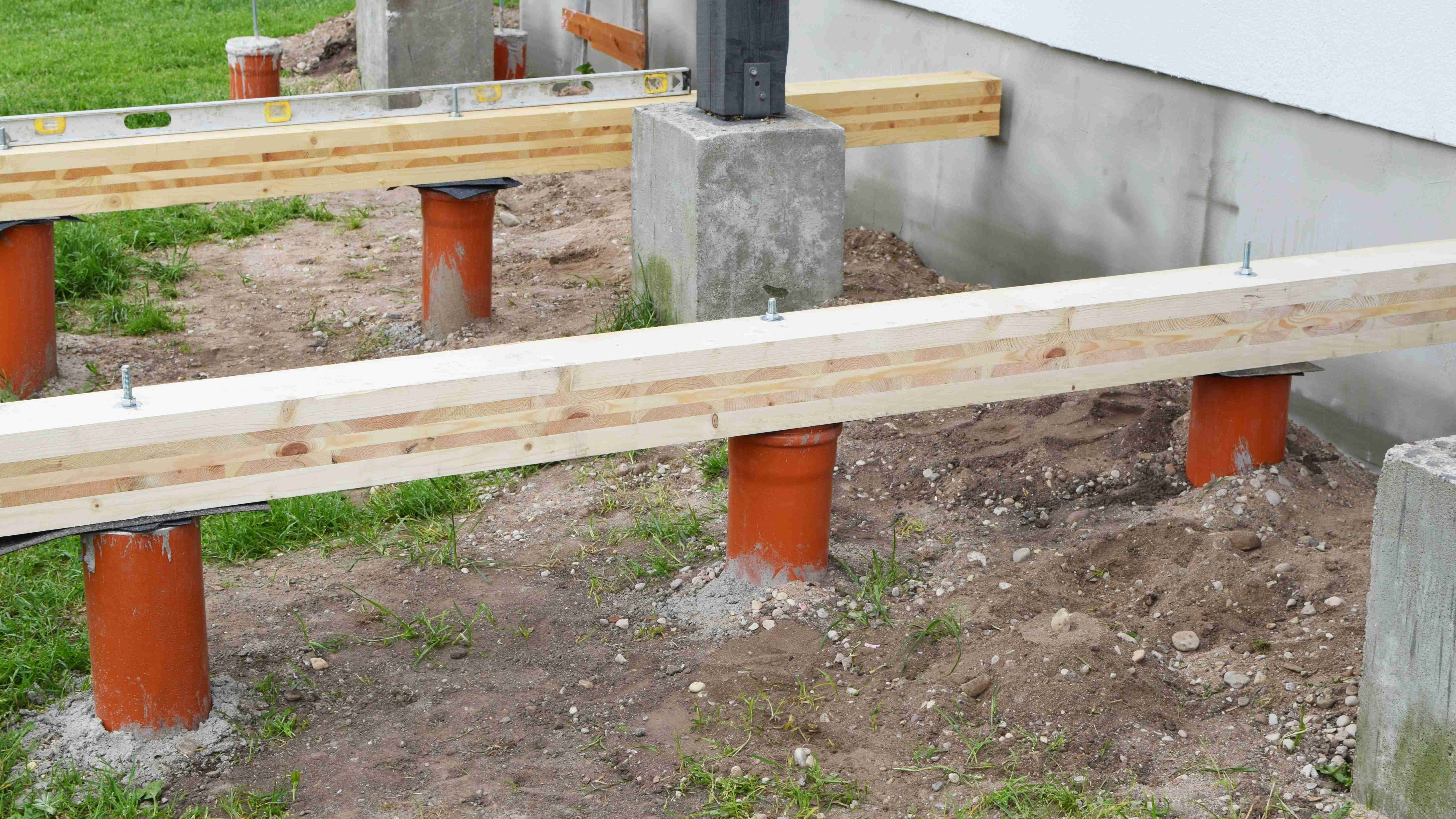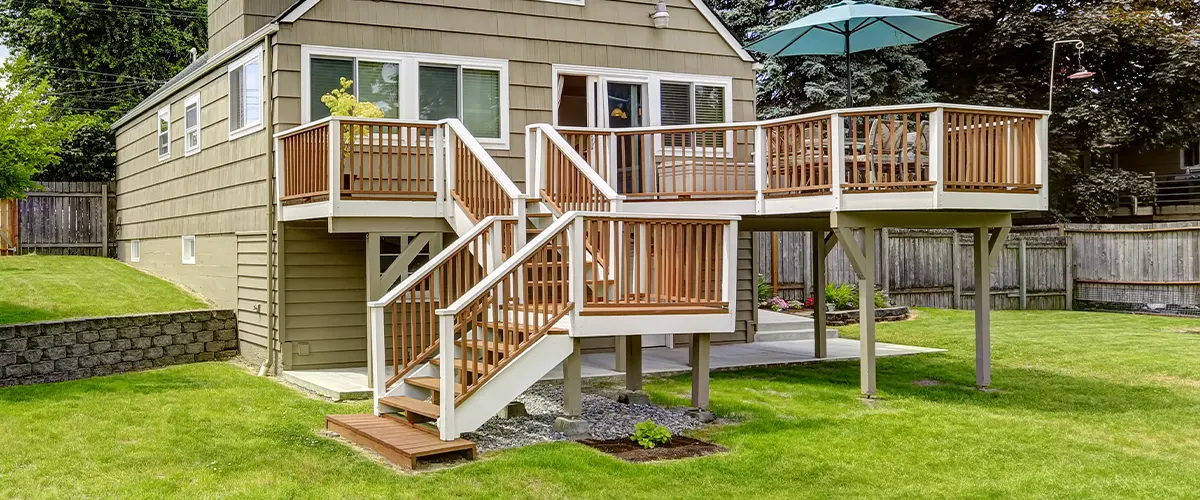Vital Tips for Solid Deck Footing: A Comprehensive Guide
Building a deck is a financial investment that requires mindful planning and focus to detail, specifically when it comes to the footing. This overview will cover crucial facets such as selecting the ideal products, evaluating dirt conditions, computing load capability, determining correct footing deepness, and accomplishing specific setup. Allow's dive into the globe of solid deck ground and establish a structure you can rely on.
Selecting the Right Deck Ground Materials
When picking the best deck ground products, it is important to think about the particular demands and requirements of your task. The quality and durability of the footings straight influence the stability and long life of the deck structure. When picking deck footing products., there are several elements to consider.
Clay soils tend to keep water, while sandy dirts drain pipes rapidly. Comprehending your dirt problems will certainly aid you pick grounds that can efficiently support the weight of the deck and prevent concerns such as heaving or sinking - Deck Footings.
Severe temperature levels, moisture degrees, and freeze-thaw cycles can impact the efficiency of deck footings. In such instances, utilizing frost-resistant materials or mounting footings listed below the frost line can aid alleviate these risks.
In addition, the size and style of your deck should likewise affect your option of footing products. Larger or more complicated decks may need much deeper or reinforced grounds to guarantee ample support. Comprehending the certain tons needs of your deck will certainly aid you establish the suitable products to use.
Eventually, choosing the right deck footing products entails careful consideration of variables such as soil conditions, environment, and deck layout. By taking these factors into account, you can select grounds that provide the required assistance, boost the security of your deck, and ensure its longevity.
Appropriately Analyzing Soil Conditions
To correctly examine dirt problems for your deck ground, it is essential to completely examine the load-bearing abilities and water drainage residential properties of the dirt in your location. Understanding the soil's ability to bear weight and its capability to drain pipes excess water will certainly help ensure the stability and longevity of your deck.
When evaluating the load-bearing capacity of the soil, it is very important to think about elements such as soil type, compaction, and density. Different soil kinds have differing load-bearing abilities, with compressed dirts typically providing better support than loose or sandy dirts. Performing a dirt test can offer beneficial info regarding the soil's ability to sustain the weight of your deck.
In addition, examining the drain buildings of the dirt is vital to stop water accumulation and potential damages to your deck - Deck Footings. Poor water drainage can cause moisture accumulation, which can compromise the foundation and trigger structural concerns. It is necessary to analyze the dirt's capability to drain water effectively to prevent these problems
Consulting with a professional engineer or dirt professional can substantially help in effectively assessing dirt problems for your deck ground. They can supply professional guidance and assistance, guaranteeing that you select the appropriate footing design and materials based on the details attributes of the soil in your area. Taking the time to completely analyze soil problems will assist you construct a resilient and strong deck.
Calculating Tons Ability for Footings
One vital step in making certain the security of your deck is to accurately compute the tons ability for your grounds. Deck Footings. The lots capability describes the optimum quantity of weight or load that the footings can safely sustain without creating any structural damages or failing. Calculating the tons ability for grounds includes thinking about numerous factors such as the size and type of grounds, the sort of dirt, the dimensions and weight of the deck, and the real-time load and dead load that the deck will go through
To compute the lots ability, it is very important to seek advice from regional building regulations and laws as they provide particular guidelines and demands for deck building and construction. These codes consider factors such as dirt bearing capacity, frost deepness, and minimal ground measurements. Additionally, it is essential to engage the services of a structural engineer or an expert specialist that can do the essential estimations and analyses to make certain the safety and security and security of the deck.
When computing the lots ability, it is vital to properly establish the online tons and dead tons that the deck will experience. The live lots describes the weight of individuals, furniture, and any kind of other items that will certainly be put on the deck, while the dead tons refers to the weight of the deck itself. By properly figuring out these tons and considering all pertinent aspects, you can guarantee that your footings are sufficiently developed to sustain the weight and preserve the stability of your deck.
Making Certain Appropriate Footing Deepness
Appropriate footing deepness is important for ensuring the security and durability of your deck. The depth at which the grounds are set up straight influences the architectural integrity of the deck, as it determines just how well the footings can resist the pressures exerted by the deck and the dirt below it.
When determining the ideal ground depth, several aspects should be considered. These consist of the kind of dirt, the regional climate, and the lots capability needed for the deck. Get More Info Normally, grounds must be placed listed below the frost line to avoid any kind of heaving or moving due to cold and thawing cycles. In areas with extensive clay soil, much deeper footings might be necessary to give sufficient assistance.
To figure out the correct footing depth, it is suggested to seek advice from with an architectural designer or structure inspector that can analyze the specific conditions of your site and offer support based upon neighborhood building ordinance and regulations. They will consider elements such as soil why not try here structure, groundwater level degree, and anticipated lots to establish the minimum needed ground deepness.
Mounting Grounds With Accuracy
Setting up footings with accuracy is essential for ensuring the security and architectural stability of your deck. Appropriately installed footings provide a strong structure, making sure that your deck can stand up to the weight of furnishings, individuals, and other loads. To install grounds with accuracy, there are several essential steps to adhere to.
To start with, it is essential to precisely mark the area of each footing. This can be done by utilizing a string or chalk line to create a clear outline. By gauging and marking the exact settings, you can guarantee that the grounds are uniformly spaced and aligned.
Following, you need to dig the openings for the footings. It is critical to dig them to the right depth and size, as specified by regional building codes and guidelines. This will give sufficient assistance and avoid the deck from moving or sinking over time.
When the holes are dug, it is vital to level and small the soil at the end of each hole. This will certainly create a steady base for the ground to remain on and prevent any type of settling or activity.
After preparing the holes, you can continue with pouring the concrete. learn the facts here now Utilize a concrete mix that is suitable for footings and adhere to the producer's guidelines for pouring and blending. Ensure that the concrete fills up the openings totally and is degree with the ground surface.
Finally, permit the concrete to cure appropriately prior to waging the construction of your deck. This will certainly make certain that the footings are strong and steady, supplying a safe and secure foundation for your deck.

Conclusion
Finally, guaranteeing solid deck footing is essential for the stability and longevity of a deck framework. By selecting the appropriate footing products, assessing dirt conditions, calculating load ability, and setting up footings with accuracy, the threat of architectural failure can be minimized. Adhering to these crucial ideas will aid develop a strong structure for any kind of deck job.
Understanding your dirt conditions will certainly assist you choose grounds that can efficiently support the weight of the deck and protect against problems such as sinking or heaving.
Consulting with a specialist engineer or dirt professional can greatly aid in correctly assessing dirt conditions for your deck ground. Calculating the tons capacity for grounds involves taking into consideration various variables such as the size and kind of footings, the kind of soil, the dimensions and weight of the deck, and the real-time tons and dead lots that the deck will be subjected to.
